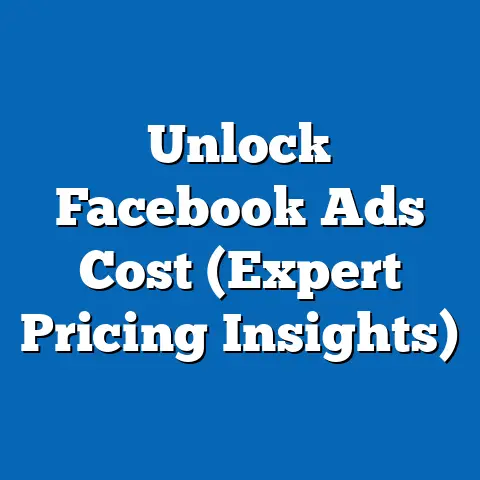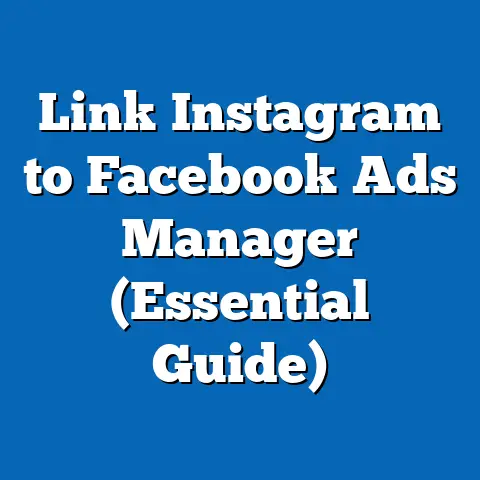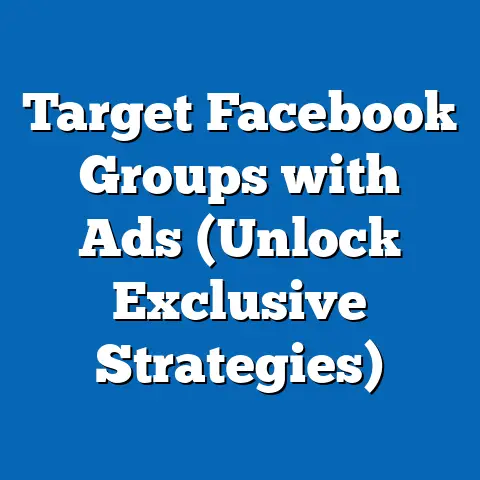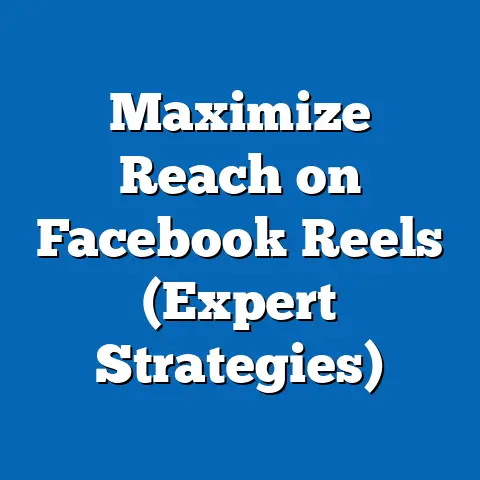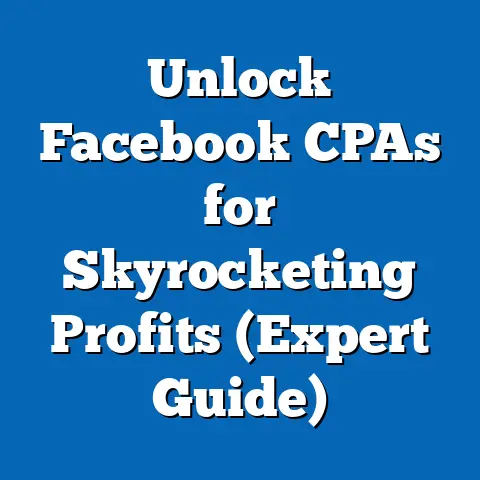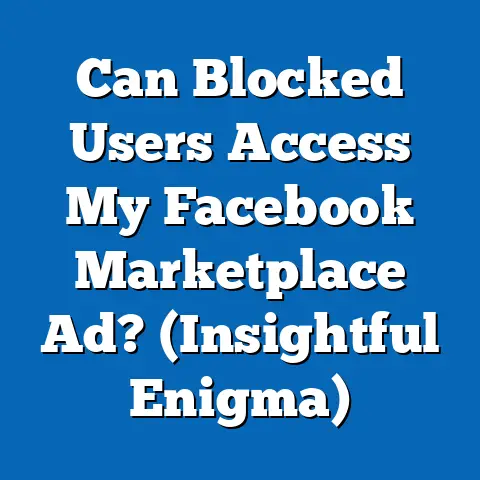Unlock Email Addresses on Facebook (Expert Strategies)
I’ve spent years navigating the ever-evolving landscape of digital marketing, and one thing remains constant: the power of email. In a world saturated with fleeting social media posts and algorithm-driven content, email offers a direct line of communication, a personalized connection that can truly nurture customer relationships. But how do you build a thriving email list in today’s noisy digital environment, especially on a platform like Facebook?
We’ll explore everything from crafting compelling lead magnets to leveraging the power of Facebook ads and engaging with relevant communities. I’ll also delve into advanced techniques like retargeting, chatbot marketing, and influencer collaborations. By the end of this article, you’ll have a toolkit of actionable strategies to grow your email list and unlock the true potential of your Facebook marketing efforts.
Understanding the Noise Reduction Challenge
Think about your own experience on Facebook. You’re scrolling through your feed, bombarded with posts from friends, family, news outlets, and of course, countless advertisements. It’s a constant stream of information vying for your attention. This is the “noise” I’m talking about.
For marketers, this noise presents a significant challenge. How do you cut through the clutter and reach your target audience effectively? How do you ensure your message isn’t just another fleeting blip in their endless scroll?
The answer, in part, lies in building a direct connection. And that’s where email comes in.
The Power of Direct Communication
While social media is fantastic for building brand awareness and engaging with a broad audience, it’s often at the mercy of algorithms and platform policies. Email, on the other hand, offers a level of control and personalization that social media simply can’t match.
With email, you can:
- Deliver targeted messages: Segment your audience and send personalized emails based on their interests, behaviors, and demographics.
- Build lasting relationships: Nurture leads and cultivate customer loyalty through consistent communication and valuable content.
- Drive traffic and sales: Promote your products, services, and website directly to your subscribers’ inboxes.
- Own your audience: Unlike social media followers, your email list is an asset you control. You’re not reliant on a platform’s algorithm to reach your subscribers.
According to recent studies, email marketing consistently outperforms other channels in terms of ROI. For every dollar spent, email marketing can generate an average of $42 in return (DMA, 2019). That’s a compelling argument for prioritizing email list growth.
This isn’t about shortcuts or shady tactics. It’s about building a sustainable, high-quality email list that will drive long-term growth for your business.
Section 1: Understanding Facebook’s Ecosystem
Before diving into specific strategies, it’s crucial to understand the landscape you’re working with. Facebook’s ecosystem is vast and complex, with its own set of rules, norms, and user behaviors. Let’s break it down:
Overview of Facebook’s User Base
Facebook boasts billions of active users worldwide, making it a potential goldmine for marketers. But it’s not just about the sheer numbers. It’s about understanding the demographics and psychographics of Facebook users.
- Demographics: Facebook’s user base spans a wide range of ages, genders, locations, and income levels. This allows for incredibly granular targeting.
- Psychographics: Understanding your target audience’s interests, values, and lifestyles is crucial for crafting effective messaging. Facebook’s detailed targeting options allow you to reach users based on their hobbies, interests, and behaviors.
For example, if you’re selling organic baby food, you can target Facebook users who are parents, interested in organic products, and have recently liked pages related to baby care.
I remember working with a client who sold handcrafted jewelry. We initially cast a wide net with our Facebook ads, targeting women aged 25-55. While we saw some results, they weren’t as impressive as we’d hoped.
The key takeaway here is that understanding your target audience is paramount. Don’t just assume that everyone on Facebook is a potential customer. Identify your ideal customer, research their interests and behaviors, and tailor your messaging accordingly.
Privacy Policies and Guidelines
Facebook takes user privacy very seriously, and rightfully so. It’s essential to understand and comply with Facebook’s privacy policies and guidelines when collecting email addresses.
- Transparency: Be upfront about how you’ll use the email addresses you collect. Clearly state your privacy policy and terms of service on your website and landing pages.
- Consent: Obtain explicit consent from users before adding them to your email list. Use opt-in forms that require users to actively check a box to subscribe.
- Compliance: Adhere to GDPR (General Data Protection Regulation) and other data privacy regulations. This includes providing users with the right to access, rectify, and erase their personal data.
Failure to comply with Facebook’s privacy policies can result in your ad account being suspended or banned. It’s simply not worth the risk.
I’ve seen firsthand the consequences of violating Facebook’s policies. A client of mine once ran a contest on Facebook without clearly stating the terms and conditions. They collected a large number of email addresses, but Facebook flagged their account for violating its promotional guidelines. They had to remove the contest and lost all the email addresses they had collected.
The lesson here is clear: always prioritize compliance and transparency. It’s better to build a smaller, high-quality email list that is compliant with Facebook’s policies than to risk your ad account and reputation with unethical practices.
The Value of Emails in Marketing
I touched on this earlier, but it’s worth reiterating: email addresses are incredibly valuable in marketing. They provide a direct line of communication with potential customers, allowing you to build relationships, nurture leads, and drive sales.
- Personalization: Email allows you to personalize your messaging based on your subscribers’ interests, behaviors, and demographics. This can significantly increase engagement and conversion rates.
- Automation: Email marketing platforms allow you to automate your email campaigns, saving you time and effort. You can set up automated welcome sequences, lead nurturing campaigns, and promotional emails.
- Measurability: Email marketing is highly measurable. You can track open rates, click-through rates, and conversion rates to see how your campaigns are performing and make adjustments accordingly.
According to a recent report by McKinsey, email is still the most effective channel for driving customer acquisition, retention, and lifetime value. It consistently outperforms social media, search engine optimization (SEO), and paid advertising.
I’ve seen this firsthand in my own marketing efforts. Email marketing has consistently generated the highest ROI for my business. It’s the most reliable way to reach my target audience and drive sales.
Key Takeaway: Understanding Facebook’s ecosystem, complying with its policies, and recognizing the value of email are essential foundations for building a successful email list on the platform.
Next Steps:
- Familiarize yourself with Facebook’s privacy policies and advertising guidelines.
- Research your target audience’s demographics and psychographics on Facebook.
- Choose an email marketing platform that integrates with Facebook.
Section 2: Strategies for Building an Email List on Facebook
Now that we’ve laid the groundwork, let’s dive into specific strategies for building an email list on Facebook. These strategies are all based on ethical practices and offer genuine value to users in exchange for their email addresses.
Creating Valuable Content
The cornerstone of any successful email list building strategy is creating valuable content. People are more likely to share their email addresses if they believe they’ll receive something of value in return.
- Lead Magnets: Offer free resources like e-books, webinars, checklists, templates, or guides in exchange for email addresses. These are often referred to as “lead magnets.”
- Exclusive Content: Provide exclusive content to your email subscribers that isn’t available elsewhere. This could include early access to new products, discounts, or behind-the-scenes content.
- Solving Problems: Create content that solves your target audience’s problems or answers their questions. This positions you as an expert in your field and builds trust with your subscribers.
For example, if you’re a fitness coach, you could offer a free e-book on “5 Simple Exercises for a Flatter Stomach” in exchange for email addresses. Or, if you’re a marketing consultant, you could offer a free webinar on “How to Generate Leads with Facebook Ads.”
The key is to create content that is highly relevant to your target audience and provides them with immediate value.
I once created a lead magnet for a client who sold online courses on photography. We offered a free guide on “10 Essential Photography Tips for Beginners.” This guide was incredibly popular and generated hundreds of email addresses in a short period of time.
The reason it was so successful was that it addressed a specific pain point for our target audience: beginners who wanted to improve their photography skills. It provided them with actionable tips that they could implement immediately, and it positioned our client as an expert in the field.
Utilizing Facebook Ads
Facebook ads are a powerful tool for collecting email addresses. You can target your ads to specific demographics, interests, and behaviors, ensuring that you’re reaching the right audience.
- Lead Ads: Facebook Lead Ads are specifically designed for collecting leads directly on the platform. They allow users to submit their contact information without leaving Facebook, making the process seamless and convenient.
- Carousel Ads: Carousel ads allow you to showcase multiple images or videos in a single ad. You can use this format to highlight different benefits of your lead magnet or showcase different products or services.
- Video Ads: Video ads are highly engaging and can be used to tell a story or demonstrate the value of your lead magnet.
When creating Facebook ads for email collection, it’s important to:
- Write compelling copy: Clearly state the benefits of signing up for your email list. Use strong calls to action like “Download Now” or “Get Your Free Guide.”
- Use high-quality visuals: Choose images or videos that are visually appealing and relevant to your target audience.
- Target the right audience: Use Facebook’s detailed targeting options to reach users who are most likely to be interested in your lead magnet.
I’ve found that Lead Ads are particularly effective for collecting email addresses on Facebook. They simplify the process for users and allow you to collect information quickly and easily.
However, it’s important to remember that Facebook ads are not a “set it and forget it” strategy. You need to constantly monitor your ad performance and make adjustments accordingly.
I recommend A/B testing different ad copy, visuals, and targeting options to see what works best for your audience.
Engaging with Facebook Groups
Facebook groups are a great way to connect with your target audience and build relationships. By joining and contributing to relevant groups, you can establish yourself as an expert in your field and encourage group members to sign up for your email newsletter.
- Find Relevant Groups: Search for Facebook groups that are related to your industry or niche. Look for groups with active members and engaged discussions.
- Contribute Value: Share helpful tips, answer questions, and participate in discussions. Don’t just promote your own products or services.
- Build Relationships: Get to know other group members and build genuine relationships.
- Promote Your Newsletter: When appropriate, mention your email newsletter and invite group members to sign up.
For example, if you’re a travel blogger, you could join Facebook groups for travel enthusiasts and share your travel tips and recommendations. You could also offer a free travel checklist in exchange for email addresses.
I’ve seen many businesses successfully build their email lists by engaging with Facebook groups. It’s a great way to reach a highly targeted audience and build trust with potential subscribers.
However, it’s important to be respectful of the group’s rules and guidelines. Don’t spam the group with promotional messages or try to hijack discussions.
Contests and Giveaways
Contests and giveaways are a fun and engaging way to collect email addresses on Facebook. People love the chance to win free prizes, and they’re often willing to share their contact information in exchange for an entry.
- Choose a Relevant Prize: Select a prize that is relevant to your target audience and aligns with your brand.
- Promote Your Contest: Use Facebook ads, social media posts, and email marketing to promote your contest.
- Make it Easy to Enter: Simplify the entry process as much as possible. Require users to submit their email address and perhaps answer a simple question.
- Follow Up with Participants: After the contest ends, follow up with all participants and offer them a consolation prize, such as a discount code or a free e-book.
For example, if you’re a clothing retailer, you could give away a free outfit to one lucky winner. Or, if you’re a restaurant, you could give away a free dinner for two.
I’ve run several successful contests on Facebook for my clients. They’re a great way to generate leads and boost brand awareness.
However, it’s important to remember that contests should be fun and engaging, not just a way to collect email addresses. Make sure the prize is something that your target audience truly wants, and make the entry process easy and enjoyable.
Leveraging Facebook Live and Events
Facebook Live sessions and events are a great way to engage with your audience in real-time and encourage email sign-ups.
- Host Engaging Live Sessions: Share valuable content, answer questions, and interact with your audience during your live sessions.
- Promote Your Events: Use Facebook ads, social media posts, and email marketing to promote your events.
- Collect Emails During Registration: Require users to submit their email address when registering for your events.
- Offer Exclusive Content to Attendees: Provide exclusive content or discounts to attendees of your live sessions or events.
For example, if you’re a chef, you could host a Facebook Live cooking demonstration and share your favorite recipes. Or, if you’re a business coach, you could host a workshop on “How to Start Your Own Business.”
I’ve seen many businesses successfully use Facebook Live and events to build their email lists. It’s a great way to connect with your audience on a personal level and offer them valuable content in exchange for their email addresses.
However, it’s important to plan your live sessions and events carefully. Make sure you have a clear agenda, engaging content, and a strong call to action.
Key Takeaway: There are many different strategies you can use to build an email list on Facebook. The key is to create valuable content, target the right audience, and offer a compelling reason for users to share their email addresses.
Next Steps:
- Create a lead magnet that is relevant to your target audience.
- Set up a Facebook Lead Ad campaign.
- Join relevant Facebook groups and start engaging with members.
- Plan a Facebook Live session or event.
Section 3: Advanced Techniques for Email Collection
Once you’ve mastered the basic strategies for building an email list on Facebook, you can start exploring more advanced techniques. These techniques can help you reach a wider audience, target potential leads more effectively, and optimize your campaigns for maximum results.
Retargeting Strategies
Retargeting allows you to reach users who have previously interacted with your content or visited your website. This is a powerful way to collect email addresses from potential leads who are already familiar with your brand.
- Website Retargeting: Target users who have visited your website but haven’t yet signed up for your email list. Show them ads that highlight the benefits of subscribing.
- Engagement Retargeting: Target users who have interacted with your Facebook posts, ads, or videos. Show them ads that offer a lead magnet in exchange for their email address.
- Custom Audiences: Create custom audiences based on your existing customer data or email list. Target these audiences with ads that encourage them to sign up for your email newsletter.
For example, if someone visits your website but doesn’t sign up for your email list, you can show them ads on Facebook that offer a free e-book or discount code in exchange for their email address.
I’ve found that retargeting is one of the most effective strategies for collecting email addresses on Facebook. It allows you to reach potential leads who are already interested in your brand and offer them a compelling reason to subscribe.
However, it’s important to be mindful of ad frequency. Don’t bombard users with too many retargeting ads, as this can be annoying and counterproductive.
Chatbots and Messenger Marketing
Facebook Messenger and chatbots are a relatively new but increasingly popular way to collect email addresses. Chatbots can automate conversations with potential leads and guide them through the process of signing up for your email list.
- Welcome Messages: Use your chatbot to send a welcome message to new users who message your Facebook page. Offer them a lead magnet in exchange for their email address.
- Lead Generation Quizzes: Create a lead generation quiz that asks users a series of questions. At the end of the quiz, ask them for their email address in order to receive their results.
- Automated Follow-Up: Use your chatbot to send automated follow-up messages to users who haven’t yet signed up for your email list.
For example, you could create a chatbot that asks users about their fitness goals and then offers them a personalized workout plan in exchange for their email address.
I’ve seen many businesses successfully use chatbots to build their email lists. It’s a great way to automate the lead generation process and engage with potential subscribers in a personal and interactive way.
However, it’s important to design your chatbot carefully. Make sure it provides valuable content, offers a seamless user experience, and is compliant with Facebook’s policies.
Collaboration with Influencers
Partnering with influencers can be a great way to reach a wider audience and encourage their followers to sign up for your email list.
- Choose the Right Influencers: Select influencers who are relevant to your target audience and have a strong following.
- Offer a Compelling Incentive: Provide the influencer’s followers with a compelling incentive to sign up for your email list, such as a discount code or a free e-book.
- Track Your Results: Use tracking links to measure the performance of your influencer campaigns and see how many email addresses you’re generating.
For example, if you’re a beauty brand, you could partner with a beauty influencer to promote your products and offer their followers a free sample in exchange for their email address.
I’ve seen influencer collaborations be incredibly effective for building email lists. It’s a great way to leverage the trust and authority that influencers have with their followers.
However, it’s important to choose the right influencers and structure your collaboration deals carefully. Make sure the influencer’s values align with your brand, and that they’re willing to promote your lead magnet in an authentic and engaging way.
Using Analytics for Optimization
Analytics are essential for tracking the performance of your email collection strategies and making data-driven decisions.
- Facebook Insights: Use Facebook Insights to track the performance of your ads, posts, and videos. See which content is generating the most engagement and which audiences are most responsive.
- Email Marketing Platform Analytics: Use your email marketing platform’s analytics to track open rates, click-through rates, and conversion rates. See which email campaigns are performing best and which lead magnets are most popular.
- Google Analytics: Use Google Analytics to track website traffic and conversions. See which traffic sources are generating the most email sign-ups.
For example, if you’re running a Facebook ad campaign to promote a lead magnet, you can use Facebook Insights to track the ad’s click-through rate and conversion rate. If the ad isn’t performing well, you can make adjustments to the ad copy, visuals, or targeting options.
I’ve found that analytics are crucial for optimizing my email collection strategies. They allow me to see what’s working and what’s not, and make adjustments accordingly.
However, it’s important to track the right metrics. Don’t just focus on vanity metrics like likes and shares. Focus on metrics that directly impact your email list growth, such as click-through rates, conversion rates, and cost per lead.
Key Takeaway: Advanced techniques like retargeting, chatbot marketing, influencer collaborations, and analytics can help you take your email collection strategies to the next level.
Next Steps:
- Set up a retargeting campaign on Facebook.
- Create a chatbot for your Facebook page.
- Identify potential influencers to collaborate with.
- Start tracking your email collection metrics.
Section 4: Ethical Considerations and Best Practices
Building an email list is a marathon, not a sprint. It’s important to prioritize ethical considerations and best practices to ensure that you’re building a sustainable and high-quality email list.
Building Trust with Transparency
Transparency is key to building trust with your subscribers. Be upfront about how you’ll use their email addresses and what kind of content they can expect to receive.
- Privacy Policy: Clearly state your privacy policy on your website and landing pages. Explain how you collect, use, and protect your subscribers’ personal information.
- Terms of Service: Provide clear terms of service that outline the rules and guidelines for using your website and services.
- Welcome Email: Send a welcome email to new subscribers that confirms their subscription and sets expectations for future communications.
For example, you could include a sentence in your email sign-up form that says, “We respect your privacy and will never share your email address with third parties.”
I’ve found that transparency is essential for building trust with my subscribers. When people know that you’re being honest and upfront with them, they’re more likely to engage with your content and remain subscribed to your email list.
However, it’s important to not just be transparent, but also to be compliant with data privacy regulations like GDPR.
Maintaining a Clean Email List
Maintaining a clean email list is essential for deliverability and engagement rates. Regularly remove inactive subscribers and those who have unsubscribed.
- Unsubscribe Link: Include an unsubscribe link in every email you send. Make it easy for subscribers to opt-out of your email list.
- Inactive Subscriber Removal: Regularly remove subscribers who haven’t opened or clicked on your emails in a certain period of time.
- Bounce Management: Monitor your email bounces and remove invalid email addresses from your list.
For example, you could remove subscribers who haven’t opened an email in the past six months.
I’ve found that maintaining a clean email list is crucial for improving my email deliverability and engagement rates. When you remove inactive subscribers, you’re sending a signal to email providers that you’re a responsible sender and that your emails are valuable.
However, it’s important to give subscribers a chance to re-engage before removing them from your list. You could send a re-engagement email that asks them if they still want to be subscribed.
Key Takeaway: Ethical considerations and best practices are essential for building a sustainable and high-quality email list.
Next Steps:
- Review your privacy policy and terms of service.
- Set up an automated process for removing inactive subscribers.
- Monitor your email bounces and unsubscribe rates.
Conclusion
Building an email list on Facebook requires a multifaceted approach, combining valuable content creation, strategic advertising, community engagement, and ethical practices. I’ve walked you through a comprehensive set of strategies, from the basics of lead magnets and Facebook ads to the advanced techniques of retargeting, chatbot marketing, and influencer collaborations.
Remember, the key to success is to prioritize value, transparency, and compliance. By offering genuine value in exchange for email addresses, building trust with your subscribers, and adhering to Facebook’s policies, you can build a thriving email list that drives long-term growth for your business.
Recap of Strategies
Let’s recap the key strategies we’ve discussed:
- Creating Valuable Content: Offer free resources like e-books, webinars, checklists, templates, or guides in exchange for email addresses.
- Utilizing Facebook Ads: Run Facebook ad campaigns specifically aimed at collecting email addresses.
- Engaging with Facebook Groups: Join and contribute to relevant Facebook groups to build relationships and encourage group members to sign up for your email newsletter.
- Contests and Giveaways: Host contests and giveaways on Facebook to incentivize users to submit their email addresses.
- Leveraging Facebook Live and Events: Use Facebook Live sessions and events to engage with your audience and encourage email sign-ups.
- Retargeting Strategies: Implement retargeting campaigns to reach users who have previously interacted with your content.
- Chatbots and Messenger Marketing: Use Facebook Messenger and chatbots to collect email addresses.
- Collaboration with Influencers: Partner with influencers to reach a wider audience and encourage their followers to sign up for your email list.
- Using Analytics for Optimization: Use Facebook Insights and other analytics tools to track the performance of your email collection strategies.
- Building Trust with Transparency: Be transparent about how email addresses will be used and comply with data privacy regulations.
- Maintaining a Clean Email List: Keep your email list updated and remove inactive subscribers.
Call to Action
Now it’s your turn. I encourage you to implement these strategies in your marketing efforts and track your results. Start by creating a compelling lead magnet, setting up a Facebook ad campaign, and engaging with relevant Facebook groups.
Don’t be afraid to experiment and try new things. The most successful email list building strategies are those that are tailored to your specific target audience and business goals.
And most importantly, remember to prioritize ethical practices and build trust with your subscribers. A high-quality email list is an asset that will pay dividends for years to come.
So go out there, start building your email list, and unlock the true potential of your Facebook marketing efforts! I’m confident that with the strategies I’ve shared, you’ll be well on your way to building a thriving and engaged community of subscribers.

